The entire student body and all our staff got together at our Sisia Campus to celebrate St Jude's Day with an extravaganza of singing, dancing and cultural shows.
Our talented students entertained each other with moving and entertaining performances giving thanks to St Jude, the patron saint of lost and desperate causes, and the people who have supported their free, high quality education.
One hundred and thirty-nine promising Form 4 St Jude’s students reached an exciting milestone in their education by graduating over the weekend.
Proud parents, fellow students, special guests and staff made up the hundreds who attended the jubilant ceremony at Smith campus and enjoyed celebratory performances by the Ngoma Club, Africanas’ group and traditional dance graduates.
“The stage that we’re at has built us a good foundation,” Form 4 student Christina said.
“The education we’ve been provided has improved our chances in numerous sectors including political, social and economic.”
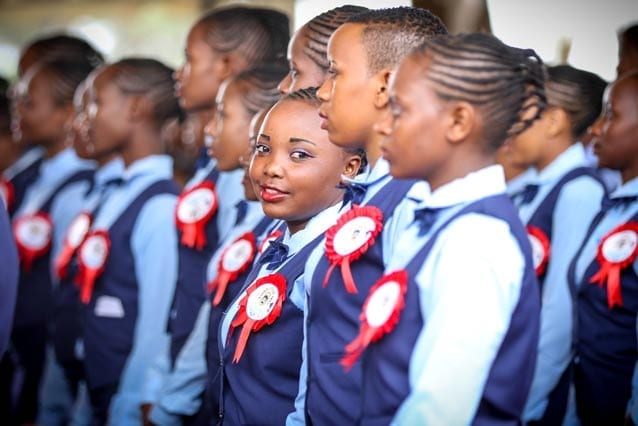
Christina’s words, spoken on behalf of her fellow graduates, are all the more striking considering the gross school enrollment rate in Tanzania drops from 93% in primary to a staggering 35% in secondary. Just 2.4% of the Tanzanian students who entered Standard 1 in 2002 completed secondary school.
Professor Patrick Ndakidemi, deputy vice chancellor of The Nelson Mandela African Institution of Science and Technology, was also struck by the significance of the event.
Touched by the occasion, he opening his speech by saying he was so excited he could cry, “because (the graduates) are the future”.
Prof Ndakidemi supported the sentiment by announcing he would personally give 1 million TZS Tanzanian shillings ($637 AUS equivalent) to reward students for discipline.
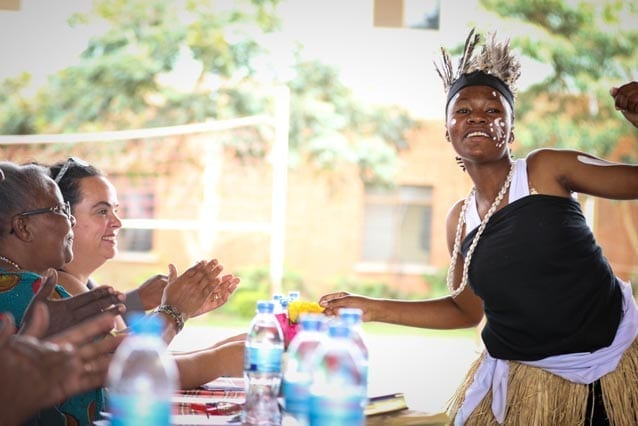
St Jude’s founder Gemma Sisia encouraged graduates to take this time to carefully consider their opportunities.
“Every single university we’ve visited in Africa recruits on marks. It’s as simple as that,” she said.
“If you want to do medicine, you want to do engineering, or you want to do teaching... If you want to get into university you need to get very high marks in the subject you are studying.”
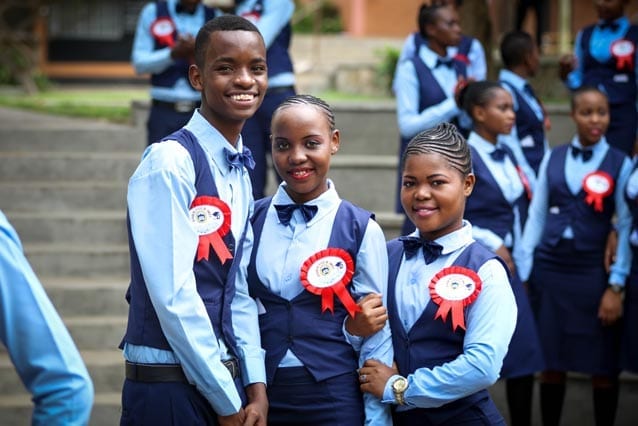
Gemma also impressed the importance of aiming for a scholarship.
“The Form 6 graduates who finished in May and are doing community service are currently filling out scholarship forms,” she explained.
“Many of the questions on the form are about what you have done, spirit-wise, that makes you deserving of that scholarship. How many community service hours have you done, how many hours have you given tutoring to younger students, how often have you helped people in your village? They’re the types of things you need to get ready for your scholarship forms.”
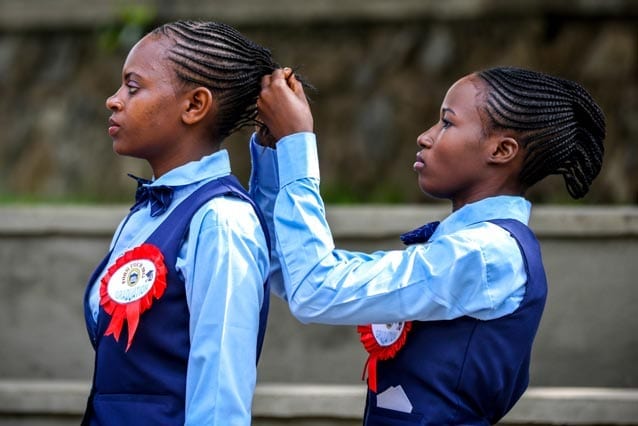
Vice-chairperson of the Secondary School Board, Jacqueline Mkindi, also had advice to share.
She said the “remarkable” performance of last year’s 126 Form 4 graduates, with 70 distinctions and 55 merits, should be an inspiration to them all.
“The school was number three out of 146 schools in the region, and 24th out of 2322 schools nationally,” she said.
“It doesn’t matter where you’re coming from, what matters is who you become tomorrow. If you want be a success in life you have to be focused, you have to work hard, you have to continuously train yourself and you have to include those principals in each and everything you do in life.”
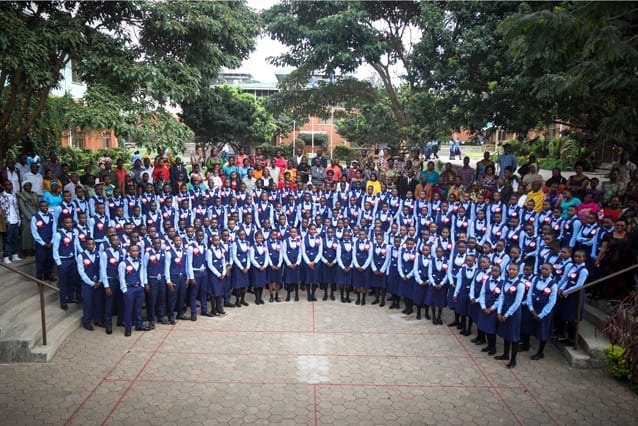
See how our Form 6 graduates are giving back to their communities in the Beyond St Jude’s Community Service Program.
Nature, team work and the great outdoors were all part of the hiking experience some of our senior primary students enjoyed last month.
More than 20 students took part in a Twiga group hike around the local Moshono area to appreciate the local plant and animal life, as well as learn about hiking etiquette and safety.
Participants brought along trail maps, binoculars and sketch pads or journals to record their outdoors experience. They were given hiking etiquette guidance, including knowing the layout of your area, safety precautions to be taken, knowing your route and how to be mindful of others while enjoying nature.
On the cusp of Tanzania’s general election, St Jude’s secondary school students have seen their own democracy in action.
Senior secondary students Farida and Victor, have been elected by their peers as Head Girl and Head Boy at our secondary (Smith) campus for the coming year.
And they certainly embody the St Jude’s vision for community-focused leaders.
“I know I am good enough to lead the people,” 20-year-old Victor said, after his successful campaign.
“I have always been around the people and I wanted to be their leader to address their needs. I want everyone at The School of St Jude to enjoy being here, to the point where, when the students go on holiday, they can’t wait to return as the school will be a very wonderful place.”
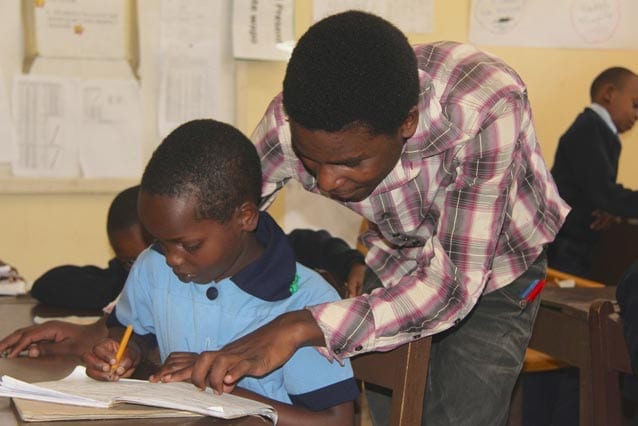
Farida said she was keen to make an impact.
“I can bring change by being fair to (the students’) matters,” the 19-year-old explained.
“I can make a change in school, and will gain many leadership skills.”
Numerous St Jude’s senior students ran for office, complete with a week of campaigning, and the results were announced last month.
“The whole school participated in weighing in on who will be their Head Girl,” Farida said.
Victor and Farida were given valuable guidance from the former Head Boy Sifuni, and former Head Girl Amina.
“(Amina) told me I’m supposed to have a positive relationship with everyone, including my fellow leaders, for this will make it easier to relate to them and talk about their matters,” Farida said.
Amina said their roles were about “motivating people and making promises you can fulfill”.
“I enjoyed it but there are a lot of challenges,” she said.
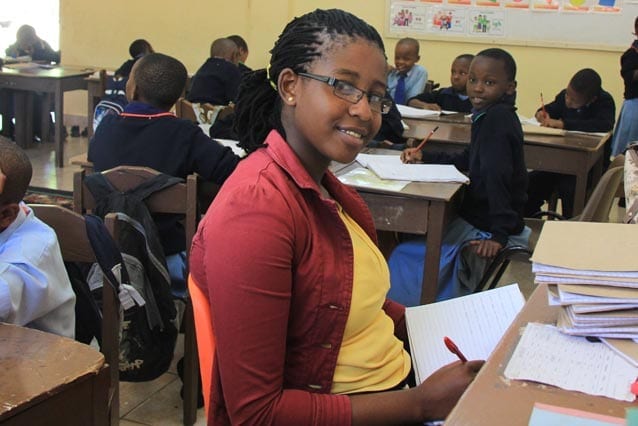
Victor, meanwhile, shadowed Sifuni to get the edge over his fellow candidates.
“I spent most of the time with him even before election, collecting some advice and ideas,” he said.
“(During campaigning) I explained what I will do for them; improve their welfare at the school and that sort of thing.”
Sifuni said the responsibilities of the Heads have increased recently and now include advising students, ensuring uniforms are neat and tidy, classrooms clean and students disciplined.
“When we were elected, we convinced the school management to give us more power over students and in decision making,” Sifuni explained.
“The management saw it was a good idea and they trusted us, so our responsibilities were extended.”
Farida and Victor said they expected the roles to improve their confidence and leadership skills immensely, and were both aware that it would not be an easy ride.
Victor was diplomatic in explaining how they would handle the challenges.
“You know some students don’t want to understand and follow school rules,” he said.
“I know this will be some of the difficulties but I am prepared to face them. We have different ways and if (a problem) is too big for me to handle I will pass that to the management and they should be able to offer some help.”
He said school ideals were also reflected in the Head Boy and Head Girl roles.
“We are about bringing the new leaders of Tanzania. It is part of the school passion to create future Tanzanian leaders,” he said.
Support a rising star today and sponsor one of our developing leaders.
Jacklyn has known for the past six years she wants a future in broadcasting and nothing is going to stop her from fulfilling her dream.
The confident senior secondary student has worked hard to make a name for herself as a presenter around town, all the while developing her radio and television skills.
“Some people work for money, others work to get a big name, but it’s always beautiful when you do something for passion,” the ambitious 20-year-old said.
“I love this and I’m ready to do anything to make it happen. When I realised that, I started training myself.”
Jacklyn’s voice bubbles with enthusiasm as she shares her ambitions during this month’s Careers Day.
Professional speakers, including an architect, a doctor, an air traffic controller and our very own accountant Victoria Thomas, share their career secrets, while Jacklyn herself is the best-credentialed on campus to give advice on broadcasting.
She gained a reputation around St Jude’s as an MC at assembly and events like Cultural Day, and by making class presentations throughout the past few years. She branched out further into the community to broaden her experience.
“When I’m at home (on holidays), I usually go to a certain radio station – Clouds’ branch in Arusha. I go there for training and make some advertisements,” she said, adding that St Jude’s senior headmaster’s younger brother, who is a DJ at Clouds FM, has become her mentor.
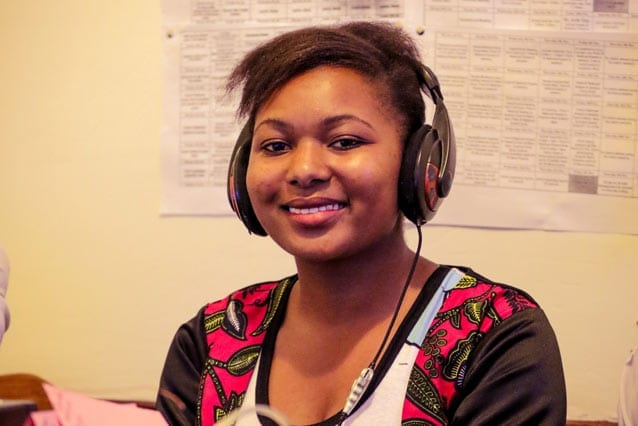
“DJ Ali came to school when I was MCing an event, and he said I was good and he wanted to train me and gave me his contacts. When I was on holiday, I went to the studio, I recorded my programs, and then I see where I went wrong and correct it. He gives me training and advice, so when I go to university it will be good to already have knowledge of many things.”
Jacklyn said she plans to pursue mass communications, public relations and advertising through the school of journalism at the University of Dar es Salaam.
She stressed the importance of having good broadcasting in a place like Tanzania.
“This world is very big, and there are some things that people need to know and it’s hard for them to get that information here,” she said.
“Let’s say something very important happens in America. Who will let the people know about something like that, that is important to the whole world? When you have a radio, which can be very cheap, even farmers who are working out at the farm can hear the news. Most people like to hear the news, and when you are on the radio you go on the air and let them know about that stuff. People can get information, be entertained through music… that’s what we are doing.”
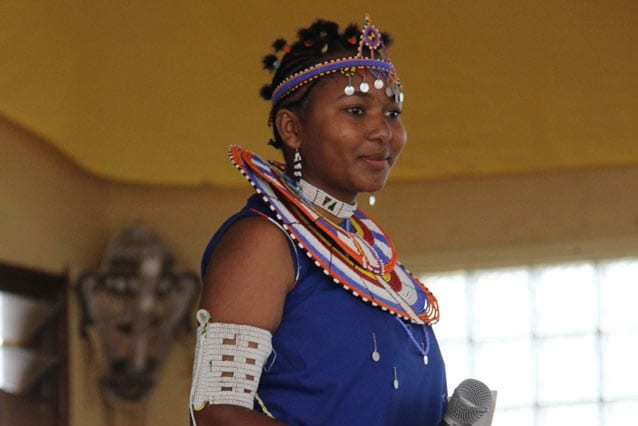
She said she would eventually like to work in Tanzania, and encourages everyone to pursue their passion by keeping a certain piece of advice in mind: don’t be afraid.
“I go on stage and host or MC and be crazy and make people happy and enjoy,” she said.
“I love it.”
It was an insight into the world of medicine many of our eager senior secondary biology students had been waiting for.
Six medical specialists from the United States, with experience ranging from ophthalmology to public health, found they were equally impressed with our students’ response to their two-day visit.
“(The students) have a great awareness, and the language they use… they really seem to understand community problems,” Amena Qureshi said, following her presentation on the public health sector. “It’s been great, really interesting to see their perspectives.”
The Chicago resident said it had been an eye-opening exercise for her group to see St Jude’s students’ viewpoints. Her presentation with fellow team member Haifa Haroon required students to identify a public health problem and come up with a solution.
“They’re talking just like we would, as grad students, and know what their community needs,” she said.
It’s just as well.
St Jude’s students who decide to pursue a health profession, and other medical professionals who travel to Tanzania to lend their expertise, are sorely needed. UNICEF states that while health care in the country has improved, about 390 children under five years old still die every day of mainly preventable and treatable conditions.
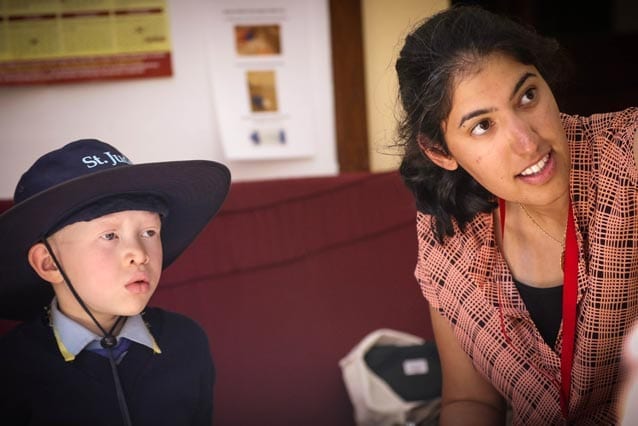
While sharing their knowledge and experience with our students, this latest medical group put their skills to good use by giving free check-ups to students with vision problems. Prior to that, only days before their arrival, they summited Mt Kilimanjaro and raised $40,000 for international charity World Sight.
Team organiser and ophthalmologist Dr Arwa Alsamarae said their St Jude’s visit seemed natural to include in the whirlwind fundraising trip.
“It all just came together,” she said. “It was fun, it was incredible, and there were a lot of students who were interested in medicine.”
Dr Arwa told the class how she decided to pursue a career in her field after discovering that some people’s sight could be restored through the magic of just a 10-minute cataract procedure.
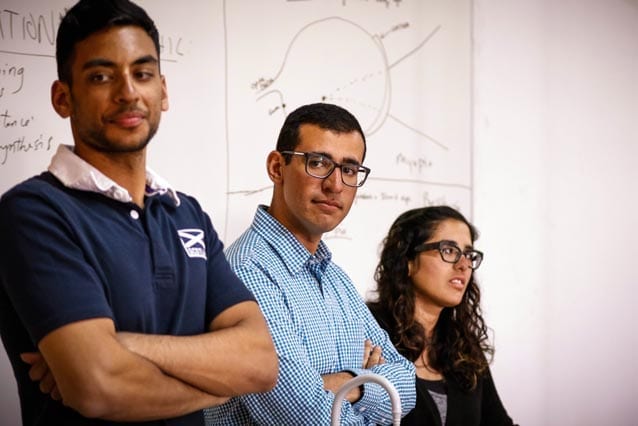
Recent graduate Akram Alsamarae shared his biomedical engineering knowledge, while Zeeshan Bhatti and Bilal Ahmed, both hailing from Kentucky, gave an overview of medicine, the areas students could specialise in, and advice on how to achieve their goals.
“Diversify, interact with your community and develop a good ‘world sense’,” Bilal, who will begin medical school next year, said. “Be a better person overall when talking to others, continue to volunteer and take on leadership roles.
“Create a passion early on so you always have something to look forward to in the back of your mind.”
The good health of our students is essential for them to make the most of their education. Right now we are looking for health professionals, allied health professionals and organized individuals who enjoy working with youth and can volunteer, short-term, for our annual student medical checks between March 7 and 18, 2016.